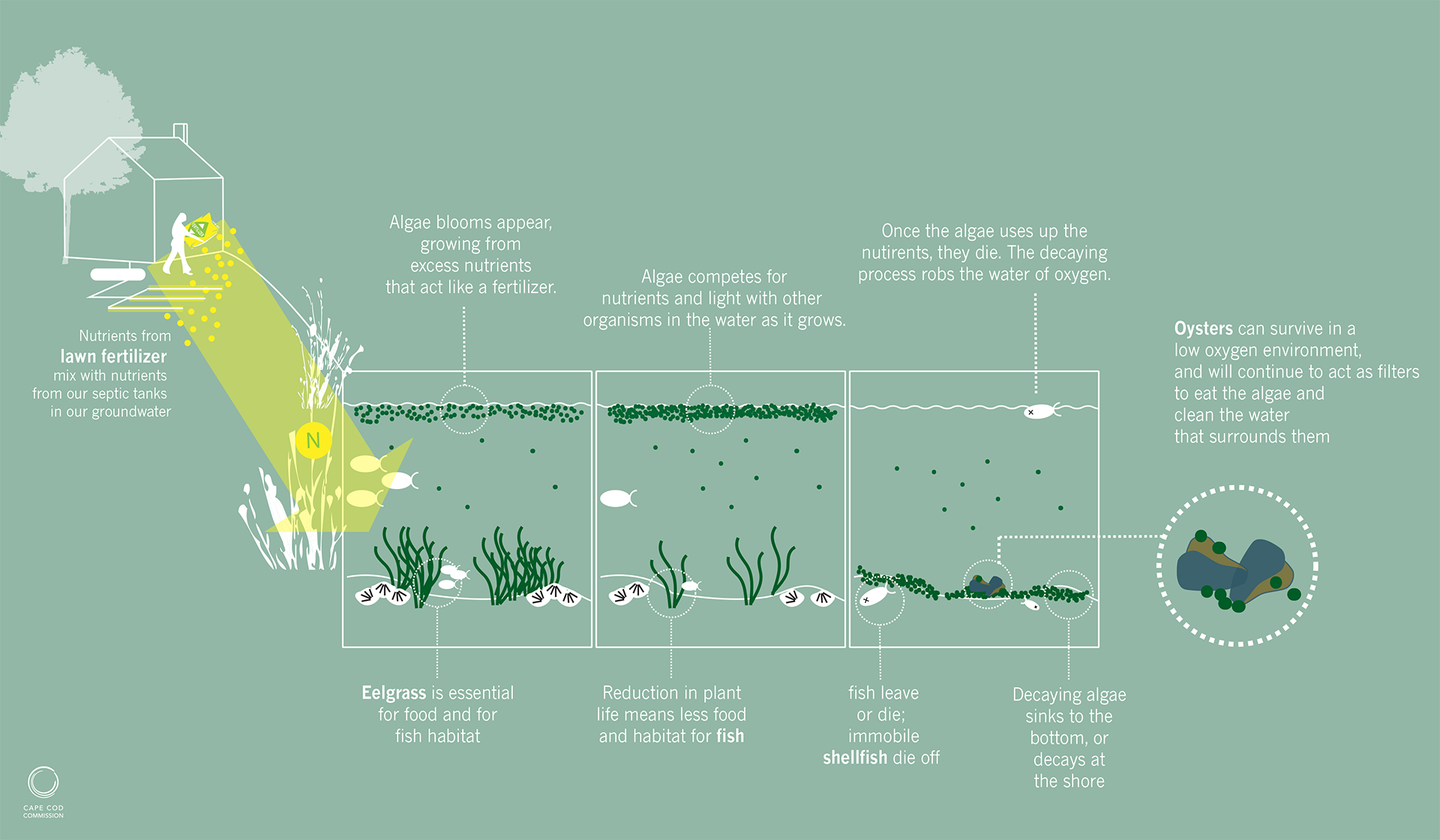What does Aquaculture got to do with Water Quality?
The growing and removal of mature shellfish can help remove nitrogen from an estuary. Shellfish do not absorb nitrogen directly from their environment; rather they feed on naturally occurring phytoplankton, which use dissolved inorganic nitrogen to grow. Thus, shellfish incorporate nitrogen from their food into their tissues and shells. When shellfish is harvested, the accumulated nitrogen is removed from the water.
Shellfish also play an important role in the cycling of nutrients, including nitrogen. They release nitrogenous waste that can be used by phytoplankton as a source of nitrogen. In addition, some of the nitrogen filtered from the water by shellfish is deposited to the sediment as feces and pseudofeces (rejected food particles). These bio-deposits are decomposed by bacteria, which transform the nitrogen to a variety of other forms, including ammonium (NH4+), nitrate (NO3-), and nitrogen gas (N2).
In addition to contributing to water quality improvements, additional aquaculture could provide economic benefits to Cape Cod. The Town of Barnstable has 61.66 of shellfish grant acreage within Three Bays and Cotuit Bay. The Town is currently looking at Warrens Cove as a prospective aquaculture nursery. Warrens Cove currently is not appropriate for aquaculture due to silt. Dredging Warrens Cove back to a sandy bottom may allow the Town to establish aquaculture nurseries. The Cape Cod Commission estimates that aquaculture beds/floating racks can remove 8-15% of the nitrogen they encounter.
Glossary of Terms
Estuaries
Oysters play important role in estuarine ecosystems.
Oyster reefs found in estuaries help stabilize the shoreline, protect salt marshes and filter water by trapping excess nitrogen and other waterborne pollutants.

